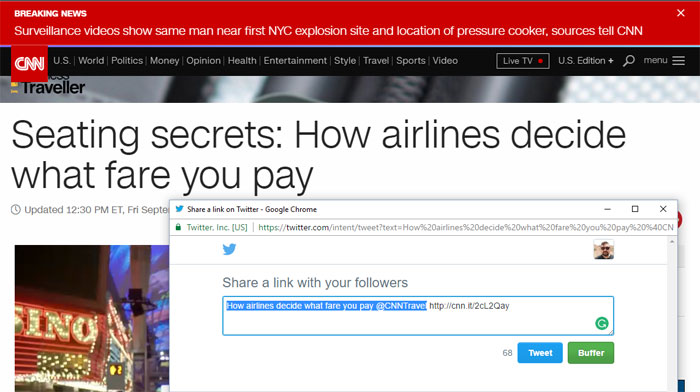Are Your Social Shares Making Your Headlines Look Dull?
Headlines, they’re one of the most important elements of a good piece of content. They help readers to know what the content is about, they generate clicks, and can set your content apart from others like it. But I’ve noticed lately when sharing content that the headline or text used for sharing content is overlooked, which can make headlines look dull to your social audience, and potentially impact your content’s engagement.
Below is a recent article I read on CNN. You’ll notice the headline to the piece is “Seating secrets: How airlines decide what fare you pay.” The “seating secrets” part of the headline is what got me to click when I saw the article in an email. By putting the word “secret” in the title it leads the reader to believe they are getting information that they shouldn’t have access to and perhaps after reading the piece will know how to save on airfare. It’s a psychological tactic that enticed me and likely a number of other users to click and read the article. But if you look in the same image, you’ll see what populated when I went to tweet the article on Twitter. The populated tweet simply reads, “How airlines decide what fare you pay.” While some frequent flyers might be interested in this headline, it doesn’t have the same psychological appeal that the “seating secrets” headline does.

This is a common problem that is a result of sites automating the creation of Twitter share content in order to have some control over the message, but oftentimes this information is pulled from the wrong location. Some tools are setup to pull the tweet content from the title tag on the page, others use the article heading. In the case of CNN, the tweet content appears to have been pulled from the page’s Open Graph title tag. Regardless of how it’s pulled, it’s important to make sure the messaging going out is exactly how you want it to appear to social media users. If not the piece may sound dull and you may miss out on potential engagement.
Wondering how your shared content appears on Facebook? Find out how Facebook’s debugger tool can help.